Ask Ethan: Why Were The First Stars Much Larger Than Even Today’s Biggest Ones?

The most massive star in the known Universe is 260 times as heavy as our Sun. But viewing the early Universe will shatter that record.
Place enough mass together in one place, give gravity enough time to contract and collapse it, and you’ll eventually get a star. Get a large enough cloud of matter together, and you’ll get a huge cluster of new stars, with a wide variety of masses, colors, and temperatures to them. Yet, if we look to the earliest times, we fully expect to find that the most massive stars from back then were far larger and heavier than any we find today. Why is that? Steve Harvey wants to know, asking:
I do not understand why a star’s metallicity has an impact on its size. Why? I am asking this because in one of your articles, you were saying that in the beginning of the universe, stars with mass almost 1000 [times] the sun’s mass probably existed because they were almost 100% hydrogen and helium.
It’s a tough pill to swallow, because the only thing that’s changed appreciably, from then until now, is the elements that make up these stars.
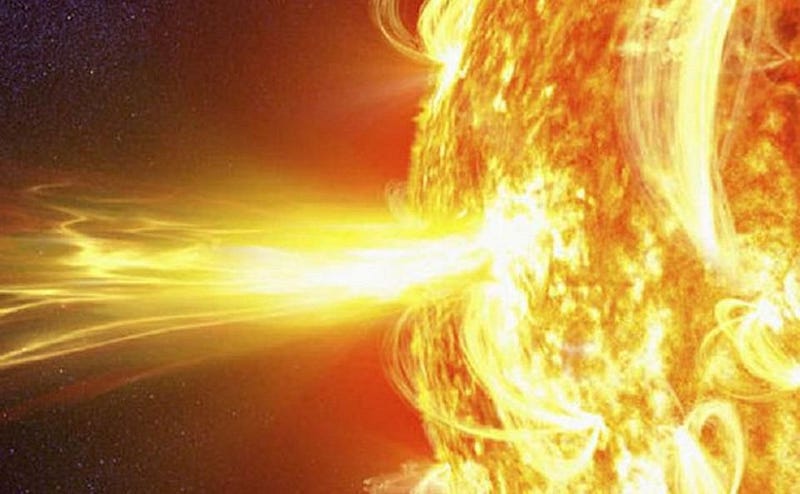
If we look at a star like our Sun, we can find evidence for a whole slew of elements that span the periodic table. In the outer layers of a star, you can see what elements are present by their absorption features. When electrons, in atoms, see a slew of incoming photons, they can only interact with the ones that have a specific amount of energy, corresponding to the energy levels that cause atomic transitions for that particular element. In the Sun, alone, there are scores of elements.
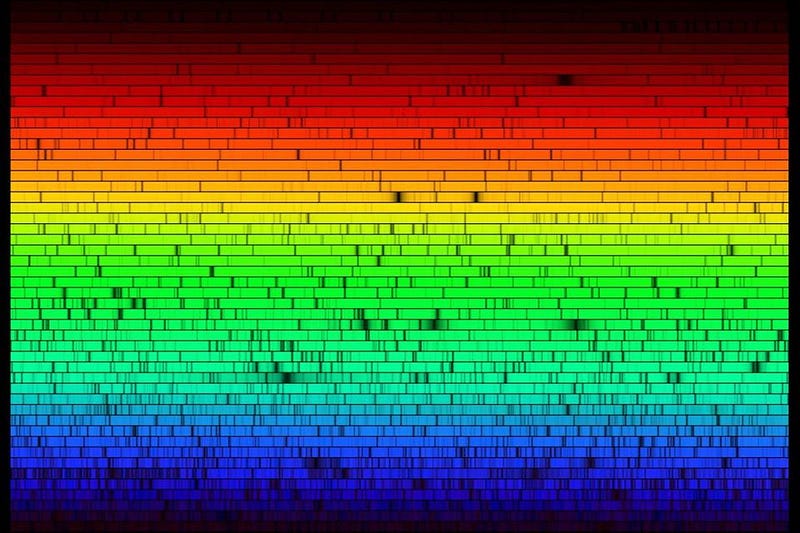
But while the Sun was born with approximately 70% hydrogen, 28% helium, and 1–2% of all the heavier elements combined, the very first stars should have been hydrogen and helium exclusively, to better than the 99.9999999% level. This is because the only way we form those heavier elements is through nuclear fusion, which happens pretty much exclusively in two ways in the Universe:
- In the first few minutes following the Big Bang, and
- In the cores of stars and stellar remnants.
When the Universe first formed protons and neutrons, it fused them into heavier elements: hydrogen, deuterium, helium-3, helium-4, and a tiny, trace amount of lithium-7.
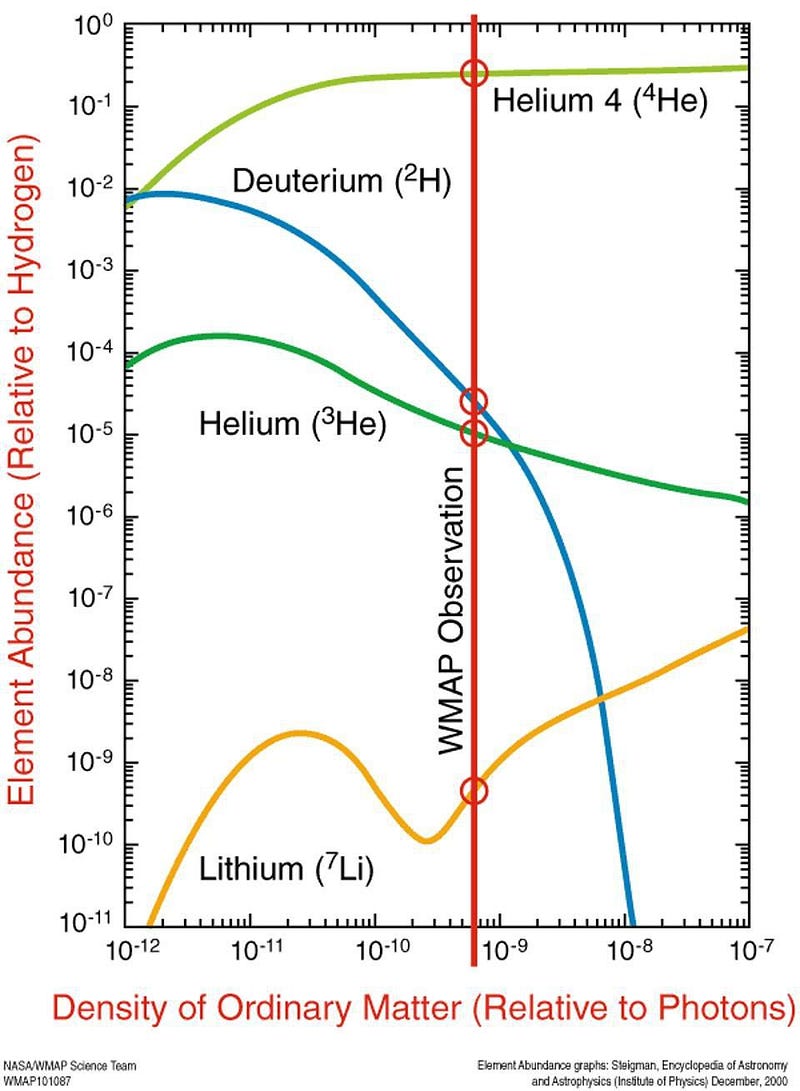
Everything else? It was made subsequently, many millions or even billions of years later. This means that the very first stars would have had practically no heavy elements at all: just hydrogen and helium alone, in about a 75%/25% split (by mass).
Over time, we expect that the interstellar medium, which is where the gas that gives rise to stars originates, gets more and more enriched by new generations of stars that live-and-die, with the heaviest-mass stars dying first. The ratio of these heavier-than-helium elements to the pure hydrogen (or hydrogen-and-helium combined, depending on who’s doing the measuring) is known as metallicity, because astronomers call all elements that aren’t hydrogen or helium “metals.”
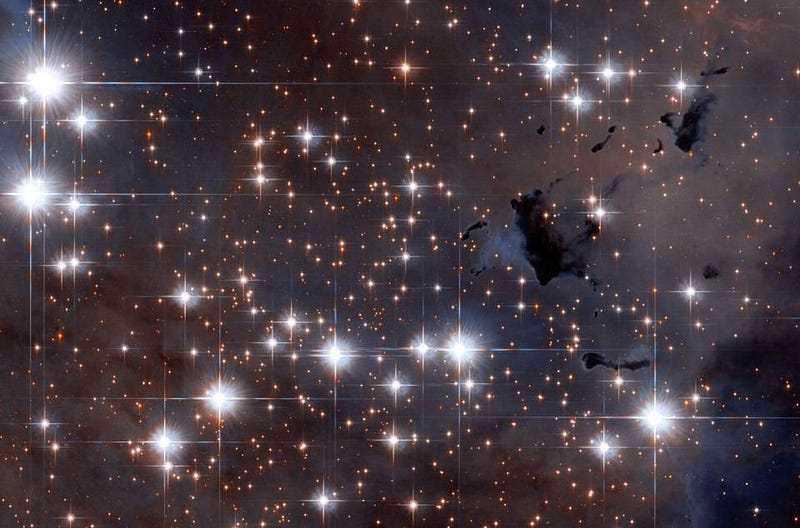
In our modern Universe, when new stars form, they form with a wide variety of masses: from about 0.08% the mass of the Sun up to about 260–300 times the Sun’s mass. The lower limit is set by the threshold for where you can ignite true hydrogen fusion, because you need that much mass and a temperature of about 4 million K to start fusing hydrogen into helium. But the upper limit is a little trickier.
Sure, you need a lot of mass and massive material to build the largest stars, but there are plenty of star-forming regions of the Universe that have a huge amount of mass. Just in the Large Magellanic Cloud, for example, right here in our local group, we have the star forming region 30 Doradus in the Tarantula Nebula. With a total mass of around 400,000 Suns, it houses some of the most massive, hottest, bluest young stars in the known Universe.
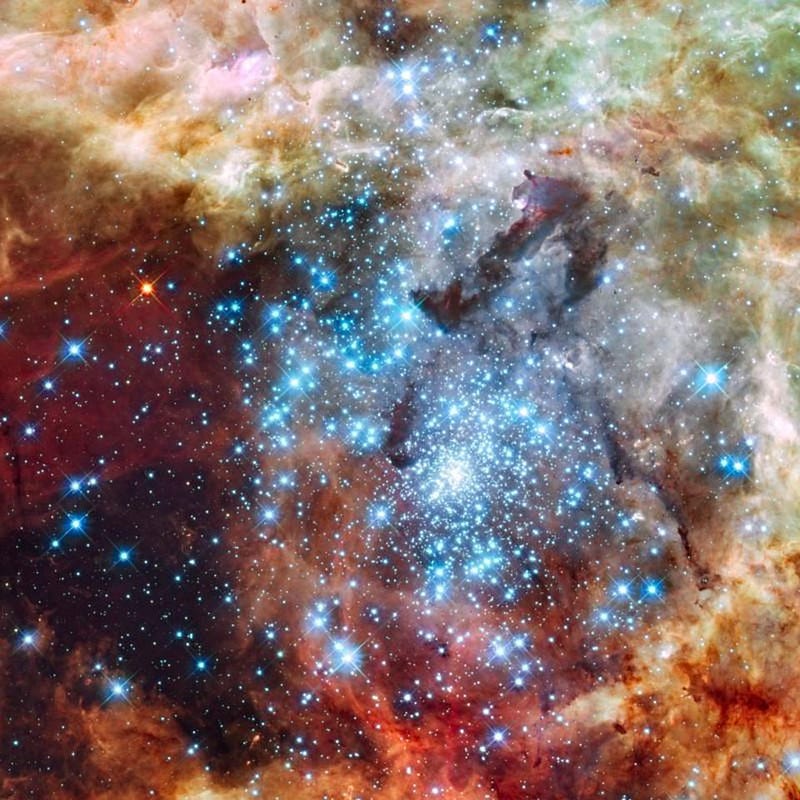
But even these cap out at about 250–260 solar masses. The reason for this is that forming a star is a race between three competing processes:
- Gravity, which works to pull everything into whatever overdense regions are present, with the initially densest regions growing the fastest.
- Radiation pressure, which comes from the collapsing matter, nuclear fusion, and existing stars, which work to blow off the matter that could continue to fall in.
- And radiative cooling, which comes from the proto-star’s ability to radiate this energy away, allowing the star to cool itself and accrue more mass in shorter time periods.
Stars only have a limited amount of time to gain mass before the star-forming material is blown away. So the key to forming a super-massive star is getting extremely massive as fast as possible.
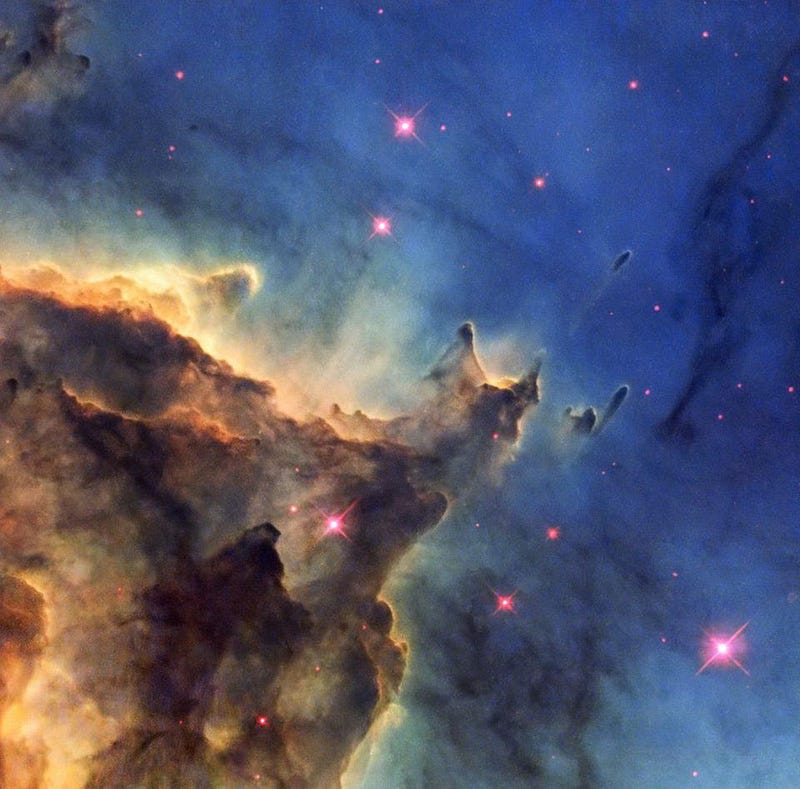
Gravity works the same in the modern Universe as it did in the early Universe. Same with radiation pressure: you form stars, matter collapses, nuclear fusion occurs, etc., and this doesn’t really depend very much on whether you have lots of heavy elements or none at all.
But that third component — the ability of a proto-star to cool itself — is what’s different for metal-free stars versus metal-rich ones. The basic difference is that heavier elements, with more protons and neutrons in their nuclei, can absorb, radiate, and carry away more energy than light elements alone. Put simply, more metals means more cooling at a faster rate.
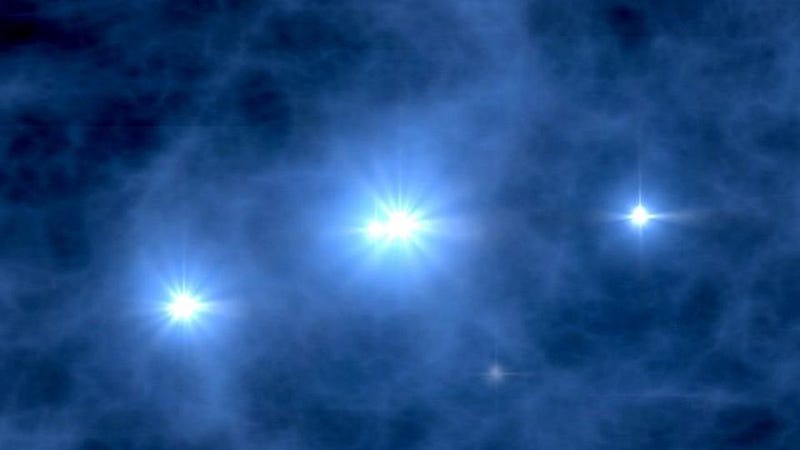
So why, then, would the earliest, metal-free stars be allowed to be heavier than the stars we form today? It seems counterintuitive, but the reason is because metals, and heavy elements, are more efficient at cooling and forming dust-nucleation sites. Without them, there are fewer ways to cool the gas that forms these stars down. Instead of radiative cooling from a wide variety of elements, as well as from dust grains, we only have hydrogen molecules (H2), which are already pretty rare, and electron cooling.
For gas to cool and form stars, you need the cooling timescale to be smaller than the dynamical (collapse) timescale. This means you need larger masses to collapse and form stars, and these both represent rarer density fluctuations and mean that smaller regions, which produce lower-mass stars, can’t collapse at all.
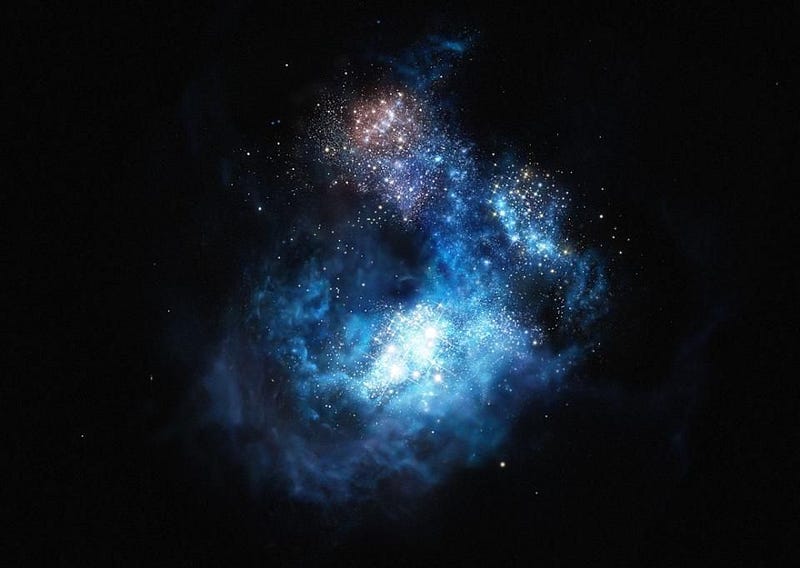
In the early Universe, it’s only very large clouds of gas that can collapse to form stars at all; only these extremely massive clumps have the ability to do it. But the more massive your clump is, the easier it is to form more massive stars, and accrue more and more matter. Gravity is like a runaway train, where the more mass it accumulates early on, the faster it grows to accumulate even more mass. Without large numbers of small clumps, and rather smaller numbers of large clumps, it’s expected that the typical mass of stars, rather than the 0.4 solar masses we see today, will be more like 10 solar masses, on average, in the earliest stages.
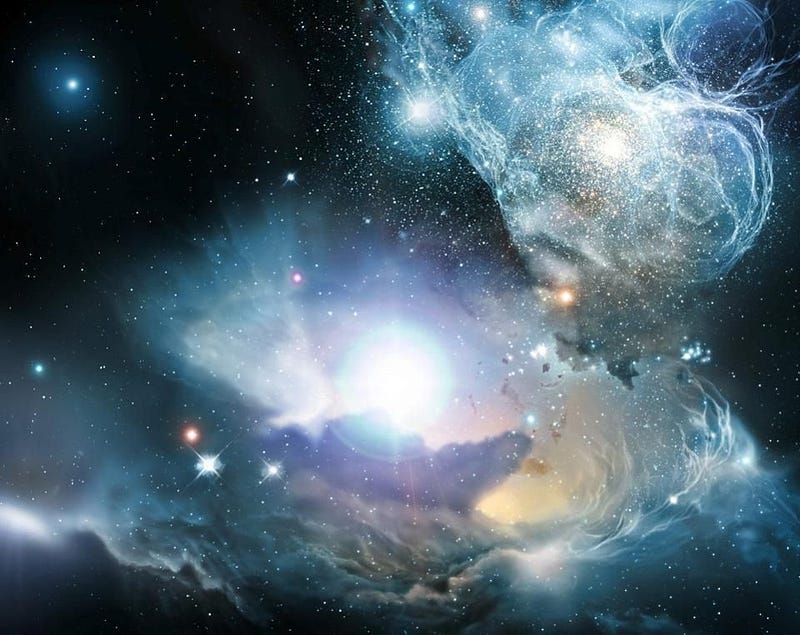
In other words, the “average” first star is 25 times more massive than the “average” new star formed today, because it formed from larger clumps of gas that we’ll ever see in the modern Universe!
Since there are smaller numbers of stars, but they have higher masses on average, we expect the entire mass distribution to be shifted. We even have a different name for it: modern mass distributions follow the Salpeter mass distribution, but the first stars are thought to follow what’s called a top-heavy initial mass function.
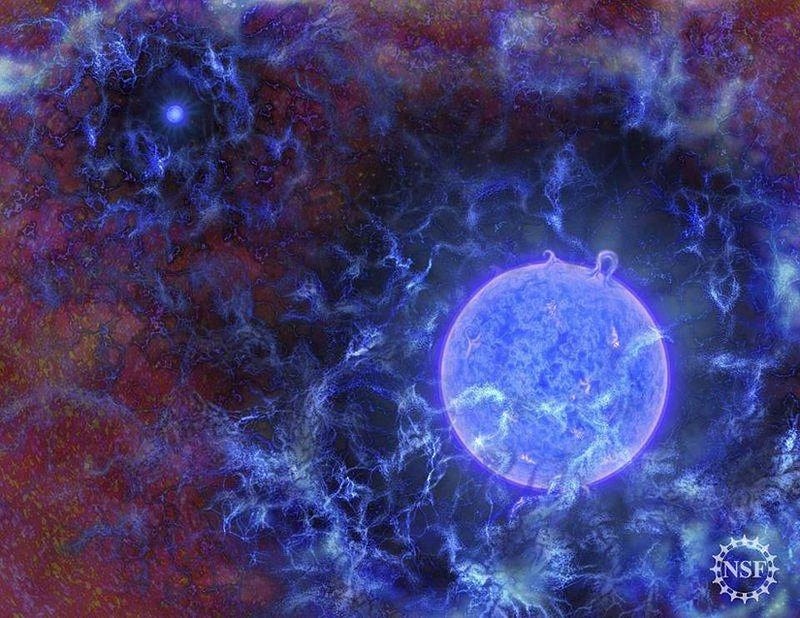
The larger your star-forming region, the more mass gets locked up in heavier, higher-mass stars. Without heavy metals, you don’t have dust to cool your clumps down, which means the smaller clumps get washed out and don’t form. It’s only the largest clumps in the largest clusters that have a chance, and that leads to ultra-massive stars that have less competition for accumulating mass than even the most massive stars today have. It isn’t merely the presence or absence of heavy elements that leads to more massive stars directly, but the fact that metal-free stars can only form in extremely massive regions at all, and that those regions will be dominated by the most massive, fastest-growing clumps inside them.
That’s why we think that among the very first stars, they may have reached or exceeded 1,000 solar masses at the extremes. If you ever wondered how we got such large, supermassive black holes so fast, the very first, metal-free generations of star may be the answer to that puzzle, too!
Send in your Ask Ethan questions to startswithabang at gmail dot com!
Ethan Siegel is the author of Beyond the Galaxy and Treknology. You can pre-order his third book, currently in development: the Encyclopaedia Cosmologica.




